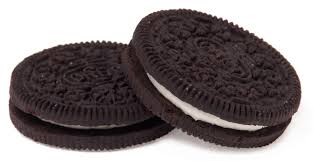3.5 Oreo Paragraph
| Site: | Cowichan Valley School District - Moodle |
| Course: | ELA5, CSS, Sferrazza |
| Book: | 3.5 Oreo Paragraph |
| Printed by: | Guest user |
| Date: | Monday, 22 December 2025, 7:54 PM |
Learning Target
By the end of this lesson, you should be able to say YES to the following questions.
- Can I use writing and design processes to plan, develop, and create texts for a variety of purposes and audiences?
- Can I transform ideas and information to create an original paragraph?

Introducing the Oreo
Don't you love cookies? Although homemade are always best, this lesson is going to focus on Oreo cookies.
(If you don't love Oreos, imagine it is a sandwich or a hamburger - with a top, a filling, and a bottom.)

So Why Oreos?
What do Oreos have to do with nonfiction reading and writing? Watch to find out:
Time to Make an Oreo
Look at the organization of a paragraph, Oreo Style!
Topic Sentence:
Crunchy creamy Oreo cookies and paragraph share common ingredients. Like the chocolate sandwich on top of an Oreo, a paragraph’s topic sentence provides a delicious introduction to the main idea of the paragraph.
Supporting Details:
Inside the paragraph, the rich smooth filling or the supportive details support and develop the topic sentence. At the bottom of the cookie and at the end of the paragraph, the delectable experience ends off with a final chocolatey crunch or a clincher sentence that restates the main idea in a powerful, new way. If necessary, it also gives the transition to the next Oreo.
Concluding Sentence:
In summary, when biting into a scrumptious Oreo cookie, remember, it has three parts just like a paragraph.
Go to your Learning Guide and follow the directions there to complete your first draft of an OREO paragraph based on the TedXKids@BC article you read in the last lesson.

Review - Why Revise?
It is easy to go through the motions of revising your work but also easy to forget exactly what you are doing when you revise and why. Watch the video and take the revising oath. Being done with your draft does NOT mean you are done with your writing. It means you are just beginning.
To See Again
RE = again VISE = to see
By seeing your writing again, you can make it better! Look at your words to see where you can do the following to improve your writing:
1. Add
2. Subtract
3. Move
4. Change
Ask yourself:
– Are my ideas in a logical order?
– Does everything make sense?
– Have I done everything I can to say things well?
– Have I chosen the best words?
– Do I have well-crafted sentences?
– Do I start with a delicious introduction for a topic sentence? Do I attempt to engage the reader with an interesting and clear topic sentence?
– Check over your rich creamy filling. Do I have clear supporting details and include examples or evidence from the text?
– Have I put in enough interesting details and used evidence from the text?
– How well does my final chocolatey crunch or a clincher sentence restate the main idea in a powerful new way?
Your Turn!
Go to your Learning Guide and use the checklists to revise, edit, and evaluate your first draft. Use a different colour pen so your teacher can see your changes. If possible, do the evaluate step with your home facilitator.

.